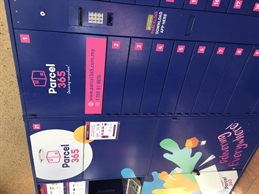
Overcoming challenges in same-day deliveries was a key part of the second day of the Last Mile ASEAN conference held in Bangkok earlier this year, with a variety of strategies being outlined by participants.
One of the most appealing, in part because of the ease it offers, was the ‘don’t worry’ approach. Somewhere between 80% and 90% of those who originally say they want same-day delivery will actually accept next day delivery, said Vykintas Mineikis, cluster operations director for the Zalora Group. “It’s not a sensitive goal,” he noted. “Next day delivery is good enough.”
The key issue is cost, with companies like Zalora pointing out the adoption rate for same-day drops with cost.
Their advice, which was not put expressly as such, is to rebate slower deliveries. “I believe even a small rebate will make a huge difference,” he said.
An alternative take on this is to offer a service something like Amazon Prime, which gives unlimited free delivery for a year. This, too, has advantages. Firstly, it locks in those customers who do a lot of online shopping and encourages them to shop even more, Mineikis said.
Another option presented was slotted or scheduled deliveries, as Nemisha Ghia, chief operating officer with India’s Scootsy Logistics, pointed out. Mineikis supported this to say that a recent survey of its customers said the issue of time slots “really stood out.” Also not to be forgotten: weekend deliveries.
There is, though, a problem with this: how accurate are customers in their time management? It requires accurate modeling and forecast not just on their part but also on the side of the delivering companies.
One alternative to this is self-collection via drop-off locations, but also needed is careful capacity management of staff and partner companies, especially the multiple 3PLs many companies in the sector end up having to work with.
Collection points, sometimes doubling as payment points, “could become important,” said Sanida Manakitpinyo, senior vice president for transportation at the Lazada Group. One of the barriers to the development of the sector, for the time being, is the cash nature of much of the region’s economy.
Serious thought, though, has gone into the issue, and already some possibilities for the different countries in ASEAN are in the cards, with some already operational. Singapore uses QR labels for collection points. Hong Kong and Taiwan have a high adoption rate, he noted, but still need to develop partnerships between convenience stores and 3PLs, he added.
Collection points are also a handy tool for dealing with the region’s surges in demand on the double days – 9.9 (September 9), 10.10 (October 10) and 11.11 (November 11). The last is Singles Day, a mega-surge phenomenon overhanging the last-mile sector even more so than Christmas ever did. In 2017, the holiday, which is particularly popular in China, resulted in a reported US$44.5 billion in sales between Alibaba and JD.com alone and is the largest online and offline shopping day in the world.
“Self-collection is a great way of managing peaks,” said Mineikis, before adding that one way to make them work even better was to incentivize customers to use self-collection points.
But not everywhere in Asia is prepared to shift delivery volume to collection points. In India, according to Ghia, less than 1% of deliveries are of the self-collection variety.
And some products simply don’t lend themselves to being moved a bit slower. Food is one and, as Michel Currie of drone company Fling noted, high-value items often require security – and delays will likely cause unhappiness for the consumer. No one expecting to take delivery of a Cartier watch, for example, is going to feel happy with the watch being held by a logistics company overnight. “They feel it’s at risk,” Currie said.
A previous panel had looked at what can be done in warehouses to help facilitate both the last mile sector and the surges which seem to have been created. Automation obviously helps, but sometimes the cost for just three hyper-busy days rules it out, and there is still a need to prepare staff, especially temporary or on-demand staff.
Again, forecasting and preparation are key, as Nuttapon Boonpinon, managing partner of N-Squared eCommerce, noted. This was underlined by Martin Sorensen, co-founder and managing director of Wear You Want, who said he had workers on-site not just on the days they were needed, but a week before “so they can be trained for this new campaign.”
By Michael Mackey
Southeast Asia Correspondent | Bangkok




